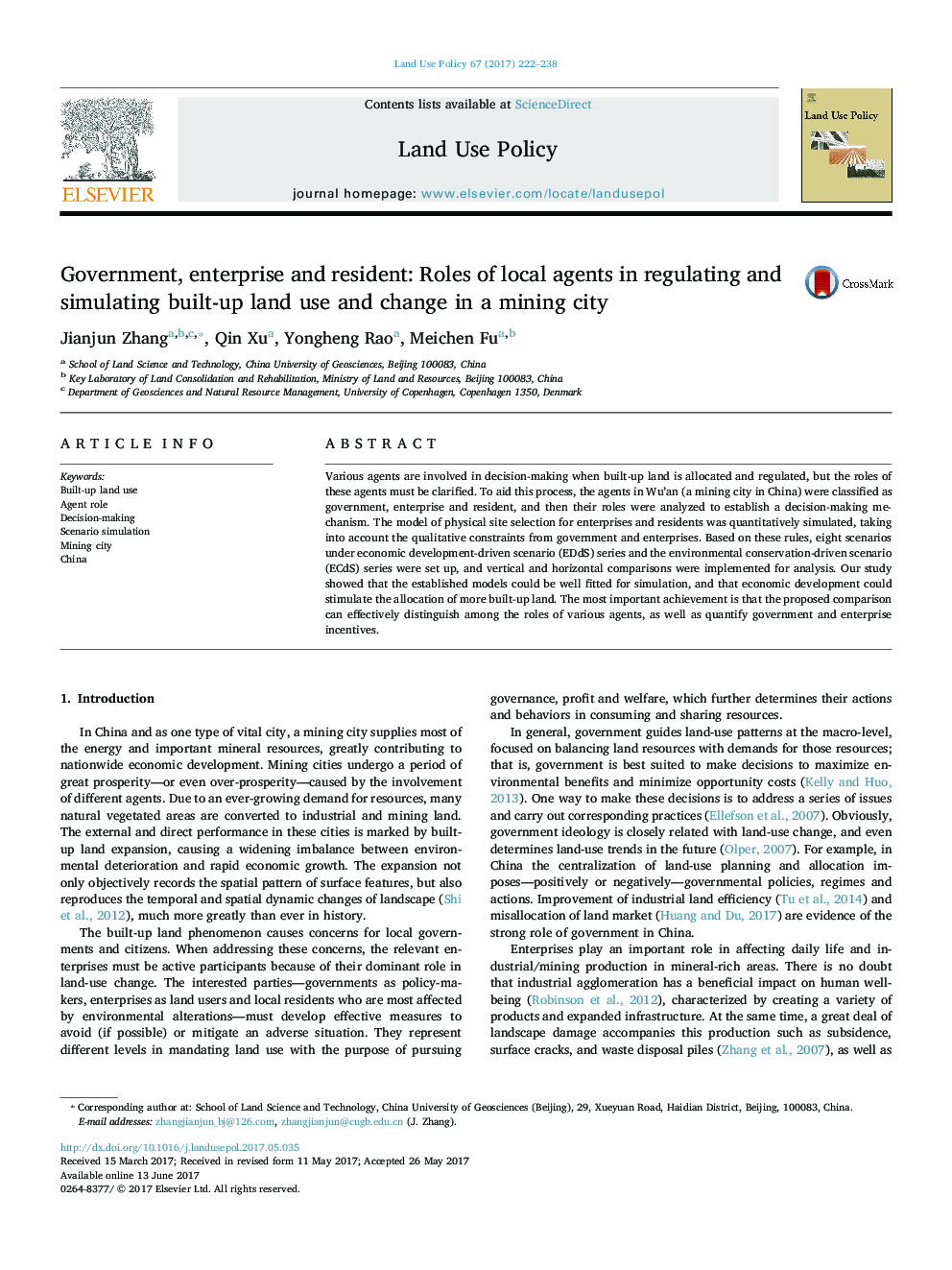| Article ID | Journal | Published Year | Pages | File Type |
|---|---|---|---|---|
| 6460655 | Land Use Policy | 2017 | 17 Pages |
â¢A decision-making mechanism involving various agents in a mining city is proposed.â¢Eight scenarios within two series are set up to simulate built-up land allocation.â¢A two-level comparison is implemented for separating unquantified agents' roles.â¢Enterprises and residents play a critical role in optimal physical site selection.â¢Government and enterprises ultimately regulate built-up land allocation.
Various agents are involved in decision-making when built-up land is allocated and regulated, but the roles of these agents must be clarified. To aid this process, the agents in Wu'an (a mining city in China) were classified as government, enterprise and resident, and then their roles were analyzed to establish a decision-making mechanism. The model of physical site selection for enterprises and residents was quantitatively simulated, taking into account the qualitative constraints from government and enterprises. Based on these rules, eight scenarios under economic development-driven scenario (EDdS) series and the environmental conservation-driven scenario (ECdS) series were set up, and vertical and horizontal comparisons were implemented for analysis. Our study showed that the established models could be well fitted for simulation, and that economic development could stimulate the allocation of more built-up land. The most important achievement is that the proposed comparison can effectively distinguish among the roles of various agents, as well as quantify government and enterprise incentives.
